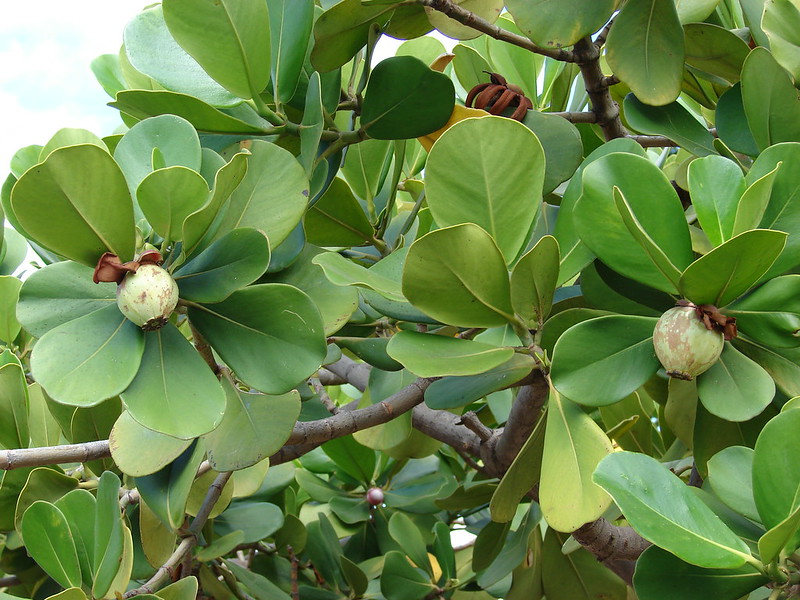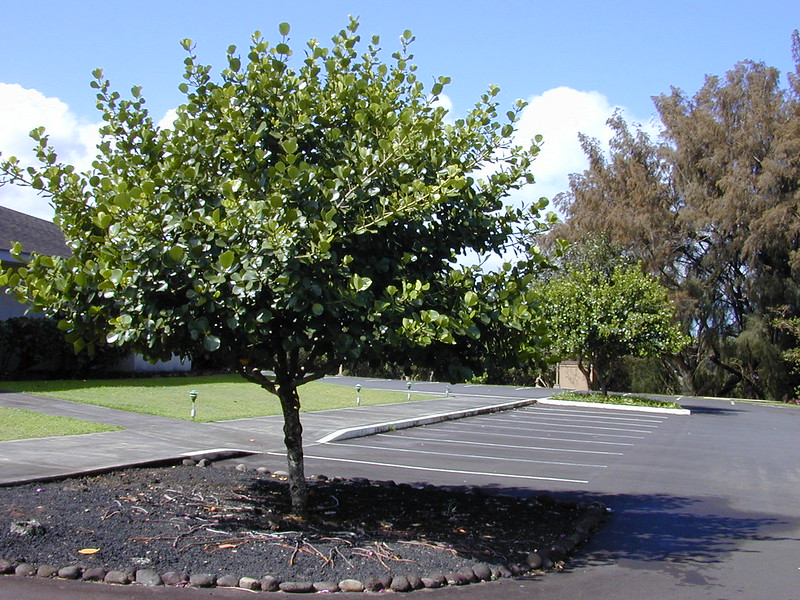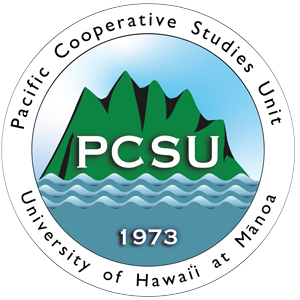
Autograph Tree
Imported to Hawaii for ornamental purposes, autograph tree (Clusia Rosea) was first documented as naturalized in 1934. Today, it is commonly planted even though it escapes cultivation. Autograph tree thrives in harsh conditions such as parking lots and near the ocean. Birds, attracted to the red seeds, disperse autograph tree widely, perching in trees and depositing the seeds on branches and in tree crotches.
This tree often begins life as an epiphyte in a host tree (or on a roof, utility pole, and/or rain gutter, etc.). It works like a cactus, drawing moisture from the air while it grows its roots into the ground. Once rooted, it has the potential to kill any host. Its roots coalesce, covering the host tree’s trunk while slowly stealing nutrients and moisture.
Impacts:
- Quickly escapes cultivation
- Strangles the host tree that it colonizes
- Forms dense thickets that shade out other species
- Produces more than 1,000 seeds per m² per year
- The sap and fruit are poisonous to humans
Description:
- A tree growing up 20 to 65 feet
- Smooth green leaves are stiff, waxy, and entire (no serration on the edges)
- Scarring on the leaves remains persistent long after damage.
- Short-lived pinkish flowers have approximately 6 to 8 petals
- The seed capsule resembles a woody apple, splitting open when ripe along 7 to 9 seams revealing many red seeds contained within
Autograph Tree (Clusia Rosea)

The smooth green leaves are about 6 inches by 5 inches 
Unfortunately, autograph tree is often planted in parking lots. 
Can you spot the autograph tree growing out of this hāpu‛u?
Photos: (L-R): Forest & Kim Starr, Forest & Kim Starr, BIISC
Controlling Autograph Tree
Physical control: Young trees can sometimes be pulled out by hand or cut with hand tools. Mechanical removal of autograph tree is difficult due to aerial roots and horizontal branches. In addition, the tree can become unstable if the wrong release points are cut. It’s even more challenging when the tree grows epiphytically, especially if the host tree is a single-stemmed palm. If in doubt, hire a licensed arborist. Autograph Tree exudes a poisonous sap when cut that can ruin tools and harm humans, so be careful. Dispose of green waste to prevent vegetative reproduction.
Chemical control: Application method- basal bark application
- Effective herbicides:
- Pathfinder II (Triclopyr ester 13.6%) – label
*This method has not been tested on epiphytic autograph trees.
